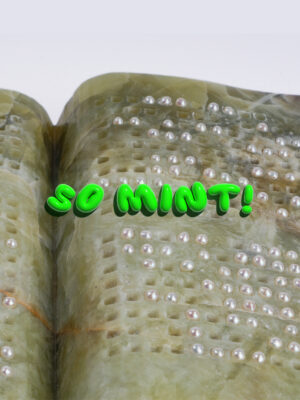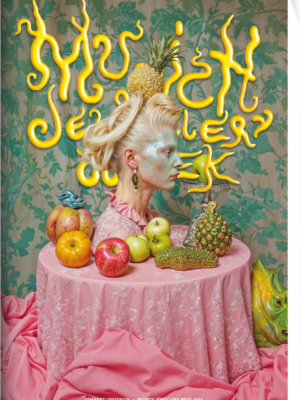Digital jewellery rendering is so sophisticated that esteemed high end brands already use digital versions of their designs to showcase jewellery online in a way which is considered more visually appealing (often meaning closer to ‘perfection’ with) than when filming physical jewellery. Digital content from studios like ARTPIX jewelry aim to emulate or enhance images and video of real diamonds and gems – stripped of all cultural context, is it only the glittering refraction of light (which mimics an object emanating light) that makes a diamond beautiful to us? We desire owning and adorning ourselves in all of the gems, precious metals, and unique forms that constitute jewellery – a millennia-old phenomenon – this desire won’t disappear as we transition into spending more and more time in virtual spaces.
If this is the case, digital diamonds can theoretically replicate this aesthetic to the point where consumers feel pleasure from looking at them. This limited lense through which many in the industry currently view digital jewellery means that some NFT jewellery brought to market has merely been a digital version of an already existing physical object, such as the NFT watch by Jacob&Co. Creating digital jewellery in this way purposely ignores the enormous wealth of possibilities which this medium affords artists, and consequently offers the consumer a tokenistic PR effort with negligible artistic value. Conversely, Marla Aaron has designed an NFT of her cult ‘Lock’ charm, the sale of which also offers a one of a kind, physical lock embellished in rubies, sapphires, yellow diamonds and enamel decoration, similar to the NFT project by Simone Faurschou detailed in the first article of this series.

In gaming and social media, digital jewellery design largely focuses on oversized forms: giant hoops or shoulder-length drop earrings, abundant fringe and mesh as body jewellery, grills and gold teeth, nameplates, large link chain necklaces and chokers – all, crucially – metallic-like visuals rendered to emulate highly reflective surfaces. Generally, the sparkle of gemstones is only employed if they are mega sized proportions (given the seemingly costly human and software-based energy necessary to accurately replicate miniscule facets.) Particularly when social media is still the best a platform to engage an audience, a crucial factor of success is drawing attention, and to keep the eye mesmerised for longer than other images – following similar principles to those which saw Instagram-native artists like @sarashakeel achieve viral fame from applying sparkling effects to still images.
Beyond digital jewellery which echoes pre-existing physical jewellery design, the common visual language of this niche art form marries alien-like shapes and colour palettes with references to rave culture – think glowing neons and amorphous shapes inspired by bio organisms. Whatever the visual reference, maximalist jewellery ‘styling’ is often the order of the day for popular digital artists like Stacie Ant (@whosthereplease) Josefin Jonsson (@Pastelae) and Arielle Bachshe (@sgicreator) as jewellery allows designers to showcase their rendering talents beyond mimicking skin and fabric textures.


With many digital artists working directly with NFT or digital art platforms, and selling through these more democratic, transparent models where the fees for the selling platform are clearly stated – the artist and their intention is not siloed behind the seller and their financial motivations. Unlike traditional models of selling physical art, the percentage of profit which is distributed to the artist from royalties and each sale can be fixed and agreed upon in perpetuity in a smart contract, meaning that if your artwork accrues substantial value, the individual or business selling the piece on does not exclusively keep all profits.
Perhaps the most radical and culturally significant shift that digital jewellery creates is subverting the structure of the traditional artist / art seller relationship. Artist Sebastian ErraZuriz shares that with works like his Digital Diamonds NFTs, “the technology creates the ability for an artist to constantly update and modify with their work, so that the relationship with the artwork, the artist and the owner can keep evolving.” One work from this project, ‘The Great Vitalik’ will virtually ‘grow’ in ‘carat’ size for every bid placed on it. What could that mean for consumers? That the art of digital jewellery is limitless.

This is the second out of five articles on Digital Jewellery commissioned by Current Obsession and written by Jodie Marie Smith.
This series seeks to explain, suggest, hypothesise and forecast the landscape of digital jewellery in our immediate and short term futures. From today’s NFTs, blockchain gems and cryptocurrency diamond auctions, to the metaverse of VR, gaming and the social networks of internet 3.0 – jewellery has evolved beyond the physical, beyond the bounds of our reality, and beyond all definition.
Jodie Smith is a San Francisco based writer, trend forecaster and creative consultant specialising in the jewellery industry. Newly transplanted from London with a background in fine jewellery, Jodie has written for The Future Lab, Rapaport, 1st Dibs, Adorn Insight, The Adventurine, Retail Jeweller, Jewelry Connoisseur and The Jewellery Cut, amongst others. Uniquely positioned between journalists, diamond specialists, luxury brands and digital artists, she reports on every facet of the jewellery world – from the designs we covet, to consumer identities and the our digital futures.
*cover image by Antoni Tudisco



